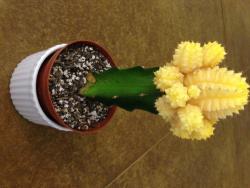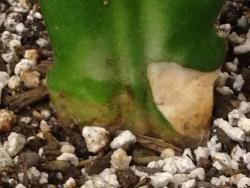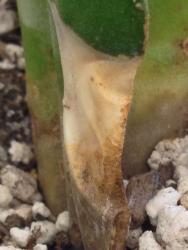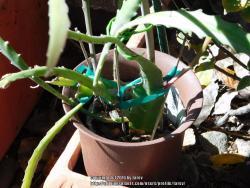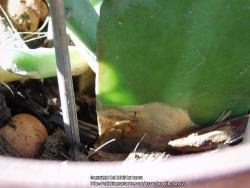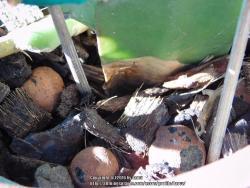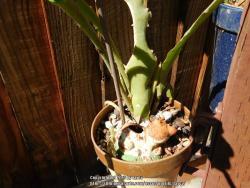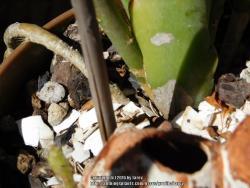We have had a grafted cactus for about three years now, growing indoors on a sunny, south-facing windowsill (in the northern hemisphere). I’ve attached photos. It may be something like a Gymnocalycium grafted onto a Hylocereus. It’s a super, robust little thing and it’s now about six inches high. the green base is shaped like a Y in cross-section, but not even-angled, so closer to a T.
Over the last couple of months, it’s developed two problems.
First, (please see detail photo attached), a it has developed what looks like a dry, dead patch just above the soil line, on one of the three ‘vanes’. Any idea what’s doing this? Overwatering?
I unpotted it to check the root mass. As you can see from the third photo, the roots are very shallow, extending barely an inch and a half below the surface. I don’t know cactus, but they also look sparse to me. Again, might this be a result of overwatering? I water by immersing the pot. The medium in the bottom of the pot is therefore likely to be wetter, longer.
Second problem, with its sparse roots but robust growth above ground, the cactus has become top-heavy and begun to lean. We keep straightening it, but it keeps leaning.
Help! Can we confirm this is overwatering? If so
1. What should be the watering interval?
2. Should i be watering from the top, not the bottom?
3. Is the current 3-inch diameter pot still about right?
4. I can’t re-pot it deeper to help stability, right?
5. Is there anything I can do, aside from lengthening the watering interval, to promote root growth and save the cactus?
6. Can I stake the cactus while it recovers, to keep it upright and eliminate mechanical stress on the roots that remain?
